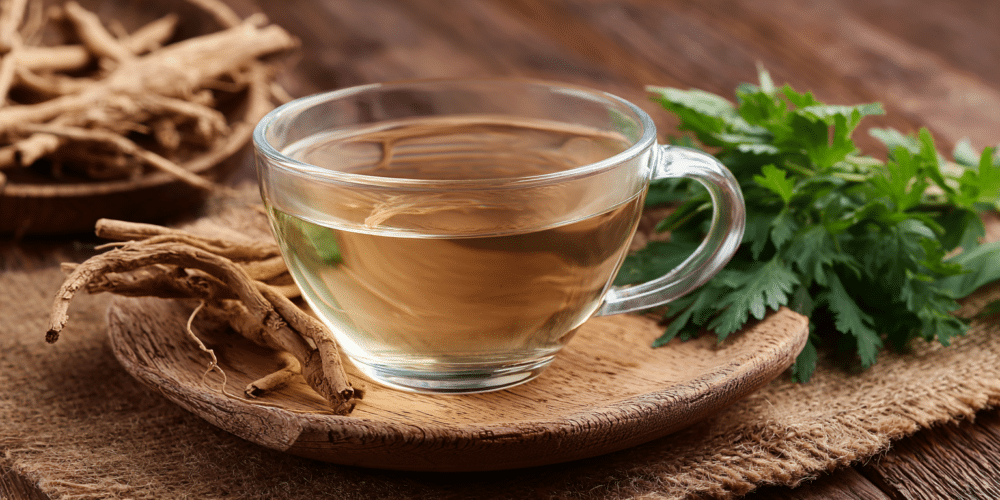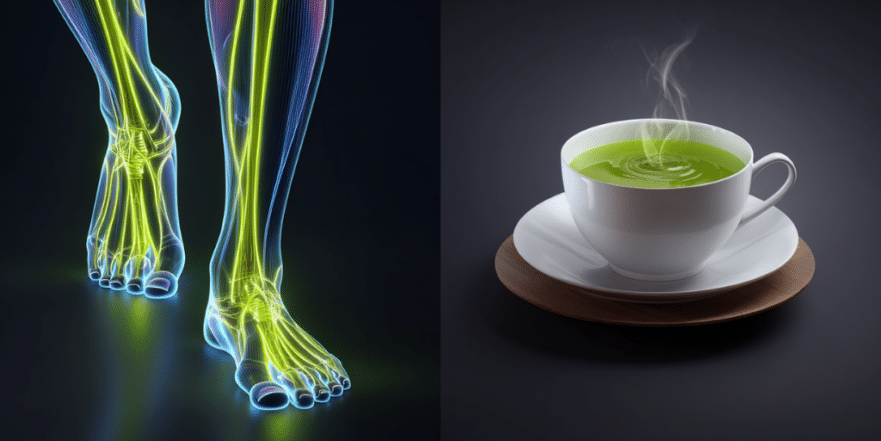5. Lavender: Soothing Nerves Through Your Sense of Smell

Sometimes, what truly works against neuropathic pain isn’t what you ingest, but what you inhale. While everyone is searching for more potent pills and teas, some chronic pain centers are using lavender diffusers. How can a simple aroma change your perception of pain? When you inhale lavender essential oil, the molecules travel directly to your limbic system, the part of your brain that processes emotions. This is key: it modulates how you experience pain. It’s not that the pain disappears, but your brain stops interpreting it as a threat.
Lavender calms your sympathetic nervous system, the one that keeps your body in fight-or-flight mode. When this system relaxes, your nerves are no longer on high alert. The pain is still there, but it no longer dominates your every moment. How do you use it? Five drops of essential oil in a diffuser before bed. Or, you can spritz your pillow with a homemade lavender spray (distilled water with 10 drops of essential oil). The great advantage of lavender aromatherapy is that it doesn’t interfere with any medications. It’s a completely safe, additional layer of relief you can use with any other treatment without worry.
Pro Tip: Are You Brewing Your Tea Wrong?

Before we move on, here’s something crucial that almost no one mentions about herbal infusions. It doesn’t matter which herb you use if you make these basic preparation mistakes. The biggest error I see is pouring boiling water over delicate flowers like chamomile, passionflower, and lavender. You destroy them in seconds. The volatile essential oils in these herbs—the very compounds that calm your nerves—evaporate with extreme heat. The rule is simple: for flowers and leaves, you need water at about 175°F (80°C). That’s when the first tiny bubbles start to rise, before a full boil. For tough roots and barks like valerian or ginger, you do need boiling water to break down their fibers.
The second secret is to always cover your cup. That steam escaping isn’t just water; it’s the medicinal compounds volatilizing. Every time you brew an uncovered infusion, you can lose up to 40% of its power. A simple lid or a small plate on top makes the difference between an effective remedy and flavored water.
4. Valerian Root: The Queen of Restorative Sleep

Now, let’s talk about the undisputed queen of restorative sleep: valerian. Yes, many people wrinkle their noses at its earthy scent, which some compare to old socks. But that aroma comes from valerenic acids, the compounds that transform your sleep into a powerful repair tool. By improving your sleep, your body produces more Nerve Growth Factor (NGF), the hormone that repairs the myelin sheath that neuropathy destroys.
I need to debunk a myth: valerian is not a knockout drug like a sleeping pill. It doesn’t leave you groggy or create dependency. It’s a sleep regulator. A sleeping pill forces you to sleep, often skipping the restorative phases. Valerian guides your brain toward natural sleep, preserving the deep cycles where all the healing happens. For neuropathy, you need consistency. An occasional cup won’t do much. But when you take valerian every night for three or four weeks, your sleep architecture reorganizes. You spend more time in REM and deep sleep, and less time in light sleep. Every extra minute in those deep phases is more time for repair. Because you’re using the tough root, the preparation is different. Use one teaspoon of dried root per cup. Let it simmer on low heat for 2 minutes, then turn off the heat and let it steep, covered, for 15 more minutes. The ideal time to drink it is half an hour before bed.
3. Turmeric: The Golden Anti-Inflammatory

While you’re in that deep, valerian-induced sleep, our next plant is working to combat inflammation in your nerves from another angle. That plant is turmeric, the most potent natural anti-inflammatory in your kitchen. Its star compound, curcumin, does something few natural substances can: it crosses the blood-brain barrier. This is the fortress that protects your brain but also makes it hard for nutrients to reach your central nerves. Curcumin gets a VIP pass.
However, the supplement industry has a dirty little secret. Those expensive turmeric capsules have an absorption problem; your body barely absorbs 3% of the curcumin. The secret isn’t to take more turmeric; it’s to combine it with black pepper. The piperine in pepper increases curcumin absorption by a staggering 2000%. Half a teaspoon of turmeric powder with a pinch of black pepper has more real anti-inflammatory power than a whole bottle of capsules without piperine. A popular way to take it is in “golden milk.” Heat a cup of plant-based milk, add half a teaspoon of turmeric, a pinch of black pepper, and a touch of coconut oil. The fat is crucial because curcumin is fat-soluble. Drink it half an hour before bed. This combination doesn’t just calm superficial inflammation; it reaches the deepest nerves that other remedies can’t touch.
2. Peppermint: Soothing the Gut-Nerve Connection

While turmeric works on direct inflammation, peppermint tackles a problem that worsens your neuropathy from the shadows: digestive inflammation. You might wonder what your digestion has to do with the nerves in your feet. A lot. Poor digestion creates low-grade inflammation in your gut. This inflammation doesn’t stay there; it travels through your bloodstream like a silent fire, irritating nerves that are already sensitive.
The menthol in peppermint relaxes the smooth muscle of your digestive system. This allows food to flow better, reduces gas, and decreases intestinal inflammation. Less inflammation in the gut means fewer inflammatory substances circulating to your peripheral nerves. There’s another hidden benefit: the menthol also has a mild but effective muscle-relaxing effect, which can ease the tension that often accompanies and worsens nerve pain. A sprig of fresh mint in hot water after each meal is all you need. If using dried mint, half a teaspoon is enough. Steep for 5 minutes in hot (not boiling) water to preserve the menthol.
1. Lemon Balm: Hacking the Vagus Nerve for Calm

Our final plant deserves a special place in your arsenal against nightly neuropathy: lemon balm. While everyone focuses on plants that act directly on pain or sleep, lemon balm works via an unexpected route: your vagus nerve. This is the longest nerve in your body, connecting your brain to your gut. It turns out that 70% of the signals traveling along it go from your gut to your brain, not the other way around.
Why does this matter for your neuropathy? The vagus nerve controls your relaxation response. When it’s active, your body enters “rest and repair” mode. Your heart rate slows, your digestion improves, and crucially, your sensitivity to pain decreases. The damaged peripheral nerves become less reactive when the vagus nerve is calm. Lemon balm contains compounds like citronellals that bind to receptors on the vagus nerve in your gut, sending calming signals upward to your brain. It’s chemical communication telling your brain it’s safe to lower its guard. One key detail: fresh lemon balm is three times more potent than dried. If you can, grow a pot on your windowsill. Five fresh leaves in hot water (about 160°F or 70°C) surpass any commercial tea bag.
Conclusion
We’ve seen how these nine plants work from different angles against neuropathy—from cinnamon protecting against sugar damage to valerian ensuring restorative sleep. Each one contributes a piece to the puzzle of nerve recovery. They are not miraculous cures, but they are powerful tools. When used with consistency and prepared correctly, they create the ideal conditions for your body to do what it does best: repair itself. By reducing inflammation, improving circulation, calming stress, and facilitating deep sleep, you give your nerves a fighting chance to heal, one soothing cup at a time.
Source: Dr. Iñigo Martín

